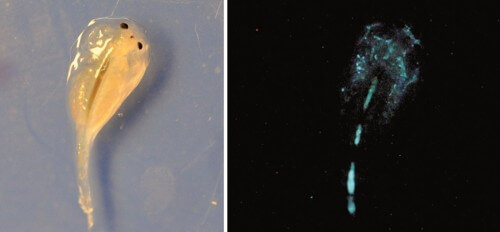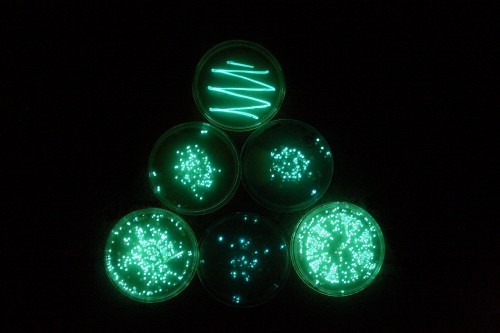The research shows that taking care of bacteria helps to spread them throughout the sea, thus contributing to their survival. The "threshold density" mechanism is an important step in the process, since the need for a large number of bacteria in order for a warning to occur increases the amount of bacteria distributed following the warning

Many creatures in the sea glow biologically with a bluish light. This phenomenon is called bioluminescence, and it is mainly common among unicellular algae and among bacteria in the deep sea. In algae, the biological warning occurs in short flashes when moving and serves as an alarm bell against predators. With the bacteria, on the other hand, the warning is continuous and the only necessary condition is a high local density known as "threshold density" - that is, the presence of bacteria in a certain amount is required in order for them to be careful. Of course, this caution cannot be used as a defense mechanism.
In a study carried out at the Inter-University Institute for Marine Sciences in Eilat by research student Margarita Zarubin, under the direction of the head of the Department of Ecology, Evolution and Behavior at the Hebrew University, Prof. Emzia Ganin, in collaboration with Prof. Shimshon Belkin and his student Michael Ionescu from the Institute of Life Sciences, the researchers tried to understand why the bacteria glow non-stop and what benefit They grow from it. The research shows that taking care of bacteria helps to spread them throughout the sea, thus contributing to their survival. The "threshold density" mechanism is an important step in the process, since the need for a large number of bacteria in order for caution to occur increases the amount of bacteria distributed following the caution.
The study examined a hypothesis opposite to the "alarm bell" concept, according to which the bacteria light up to attract the predators and not to deter them. Animals are unable to digest these luminescent bacteria, and they continue to glow after being ingested, causing the ingesting animal (usually crustaceans) to glow for several hours. In experiments carried out in complete darkness, night fish saw the illuminated crabs from a distance and preyed on them very efficiently. On the other hand, crabs that swallowed mutated bacteria and therefore do not glow were not detected by the fish.
An examination of various nocturnal fish that feed on crabs shows that their stomachs contain an abundance of luminescent bacteria. "For the bacteria, reaching the fish's stomach is likened to reaching paradise - a protected place, full of food, which can also be used as a means of transportation for distribution in the open sea," explains Prof. Ganin.

The research also shows that many crabs are attracted to the light of the bacteria and therefore congregate around them. This goes against the survival instinct as it increases the risk of the crabs being predated. The "threshold density" can explain the phenomenon. The cancer "knows" that the presence of a light spot means a high density of bacteria indicating a rich accumulation of organic material on which the bacteria grow. "In the deep sea, the amount of food is very limited, so it is worthwhile for the crab to take the risk, because the profit in finding rare food is great, while the risk of meeting a predatory fish is small because there are not many fish in the deep sea," explains Prof. Ganin.
The research was recently published in the prestigious journal PNAS - Proceedings of the US National Academy of Sciences.

4 תגובות
Anat is right. It doesn't seem like they really found the reason...
The title should be
"Light for fish: researchers from the Hebrew University hypothesize the reasons for the appearance of bacteria in the sea"
Very interesting. Many years ago I was swimming at night in Sharem-Al-Sheck and was seeing many lighted areas in many colors (not only blue) and I was not sure what it was, since these were a meter or two in size and did not match corral or fish shape and size. Now it is clear to me what I have seen.